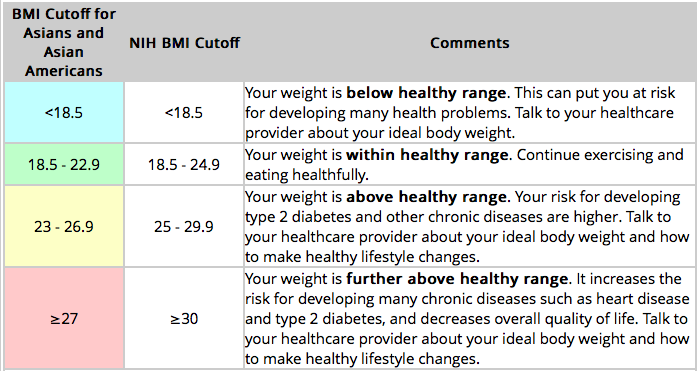When I was first diagnosed with diabetes in 2003, my doctors were puzzled. While most of their patients were obese, I was a so-called “normal weight” (BMI < 25) patient. How did I get diabetes at my BMI and and at my age (36 at the time…)?
Today, much of the mystery is solved. I am a “TOFI” (think on the outside, fat on the inside) Asian-American.
The term TOFI was popularized in an article published in The Guardian describing how apparently “thin” people have hidden fat around the organs, which can lead to diabetes.
Tofis probably need to worry more about their health than others, because the fat deposits they carry are hidden in the white fat that lies around their vital organs, streaked through their underused muscles, and wrapped around the heart. It is this fat that sends out the chemical signals which eventually lead to insulin resistance, diabetes and heart conditions, rather than the fat lying in dimples underneath the skin.
While The Guardian article did cite genetics playing an “enormous role,” the data at the time was more anecdotal, with no specific mention of Asian-Americans.
The data came in 2012!
The CDC’s National Health and Nutrition Examination Survey (NHANES) data taken from 1998-2012 revealed that I was actually part of a larger group of TOFI Asian-Americans living with diabetes. In 2015, the NIH issued a press release titled “More than half of Asian Americans with diabetes are undiagnosed.” In it, they wrote:
One difference between Asian Americans and the other groups studied, however, is that Asian Americans often develop type 2 diabetes at a lower body mass index (BMI). The NHANES data showed the average BMI for all Asian Americans surveyed was under 25.
Today, the CDC has a page “Diabetes and Asian Americans” devoted to this issue.
But people of Asian descent have less muscle and more fat than other groups and often develop diabetes at a younger age and lower weight. That extra body fat tends to be in the belly (visceral fat). This isn’t the “inch you can pinch,” the fat stored just under the skin. Visceral fat is out of sight, wrapped around organs deep in the body. You can’t tell how much visceral fat someone has by looking at them.
So, looks can be deceiving when it comes to Asian-Americans and diabetes!
Affiliated with Harvard Medical School, the Joslin Diabetes Center has gone so far as to create a new BMI chart specific to Asians.

Note that while being Asian-American and TOFI is linked to diabetes, there is some broader work suggesting a distinct “Asian phenotype” be applied in medicine as a whole!
Factoring in Asian phenotypes is essential for the medical research community and the development of improved clinical practice guidelines across a continuum of disciplines that will ultimately translate to better human health round the world.
So, while the medical research community still has a ways to go, it is clear that we TOFI Asian-Americans need to take matters of Type 2 diabetes into our own hands!

[…] my last post, I discussed the “fat on the inside.” One of the most insidious places for this fat […]